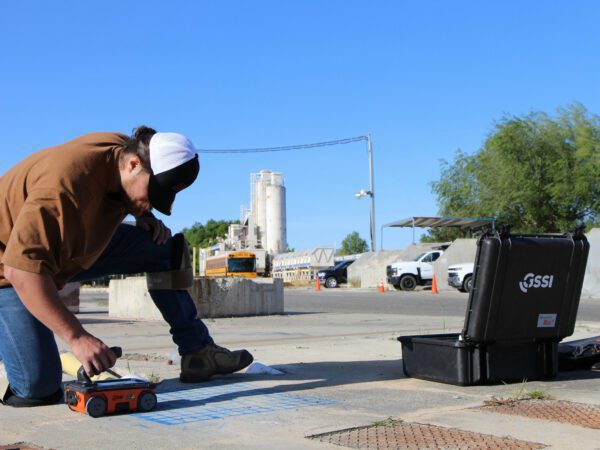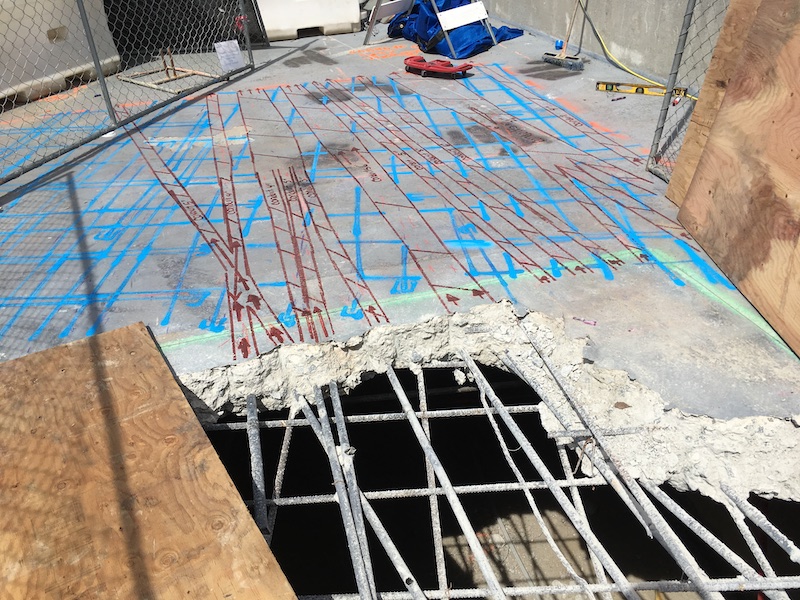Find RainierGPR Service Areas Near You for Specialist Concrete Scanning
Concrete Scanning: A Crucial Step Towards Ensuring Structural Integrity and Safety And Security
In the realm of building and construction and infrastructure upkeep, the value of concrete scanning can not be overstated. This thorough procedure holds the crucial to revealing potential dangers concealed beneath the surface area of apparently solid structures. By employing innovative innovation and methods, concrete scanning acts as a crucial device in making certain that the integrity and security of bridges and structures are maintained to the greatest requirements. Nevertheless, beyond its surface-level effects, the duty of concrete scanning extends much deeper than fulfills the eye.
Importance of Concrete Scanning
Concrete scanning plays an important role in making sure the structural integrity and safety and security of buildings and infrastructure jobs. By using sophisticated innovations such as ground-penetrating radar (GPR) and electro-magnetic induction, experts can non-destructively examine concrete structures to detect prospective issues, voids, ingrained objects, and support layout. This process enables very early detection of anomalies that can jeopardize the security of a framework, avoiding expensive damages and ensuring the safety and security of residents.
Before boring, cutting, or coring into concrete, scanning helps recognize the exact areas of rebar, post-tension cords, and other embedded components, minimizing the risk of accidental hits that can lead to architectural weaknesses. Additionally, concrete scanning help in high quality control by confirming the density of concrete covers and spotting any disparities that might influence the total durability of the structure.
Technology for Concrete Inspection

Benefits of Very Early Detection
Prompt discovery of architectural concerns can considerably alleviate threats and make certain the longevity of building tasks. By recognizing possible troubles early on in the building and construction process, stakeholders can take aggressive measures to deal with concerns prior to they rise right into bigger and a lot more costly problems. One of the key benefits of very early detection is the avoidance of architectural failures, which can pose severe safety and security risks and result in job hold-ups and monetary losses.
In addition, early discovery enables timely repairs and maintenance, which can aid expand the life-span of the framework. By resolving issues promptly, construction teams can prevent costly fixings and even the need for premature substitute of architectural components. This aggressive strategy not just saves time and money however also enhances the total safety and sturdiness of the building and construction task.
In addition, very early detection can improve task preparation and decision-making by giving stakeholders with valuable understandings into the problem of the structure. Armed with this details, task supervisors can make enlightened options regarding building techniques, timelines, and materials, leading to much more effective and efficient job outcomes.
Making Sure Architectural Stability
Ensuring the architectural security of a building task is paramount to its security and long life. Click This Link Architectural security refers to the capacity of a building or infrastructure to maintain its type and feature under environmental conditions and various loads. To attain this, extensive evaluation and surveillance of the structure are crucial. Concrete scanning plays a critical role in why not try here making certain structural security by spotting prospective concerns such as voids, delamination, or support corrosion that could jeopardize the stability of the structure with time.
By making use of advanced scanning technologies like ground-penetrating radar (GPR) and electro-magnetic induction, building and construction experts can non-invasively evaluate concrete frameworks to determine areas of worry below the surface. This positive method enables the early detection of weaknesses or defects, allowing prompt repair work or reinforcement to avoid structural failings.
Routine concrete scanning during various building and construction phases and throughout the life process of a structure can help keep its stability, reduce risks, and guarantee the safety of occupants. By prioritizing structural stability via concrete scanning, construction jobs can improve their durability and longevity, ultimately contributing to greater security and long life.

Avoiding Essential Failings
Executing regular evaluations, such as concrete scanning, can disclose concealed issues like voids, splits, or deterioration that could compromise the honesty of a structure. By making use of advanced scanning innovations like Ground Permeating Radar (GPR) or Concrete X-ray, designers can non-destructively evaluate the condition of concrete and determine weak points that need reinforcement or repair.

Verdict
In final thought, concrete scanning plays an important function in guaranteeing architectural integrity and safety by utilizing innovative technology for early detection of possible concerns. This aggressive technique aids protect against essential failings and makes sure the stability of structures. It is essential to focus on concrete examination as a common method to safeguard the longevity and safety and security of structures and facilities.
Concrete scanning plays an important function in ensuring the structural stability and security of structures and facilities jobs. Furthermore, concrete scanning help in top quality control by confirming the density of concrete covers and identifying any kind of discrepancies that may impact the total resilience of the framework. Concrete scanning plays a vital role in making sure architectural security by detecting prospective concerns such as voids, delamination, or support corrosion that could compromise the stability of the structure over time.

In final thought, concrete scanning plays a crucial role in ensuring structural honesty and safety and security by making use of innovative innovation for very early detection of potential concerns.